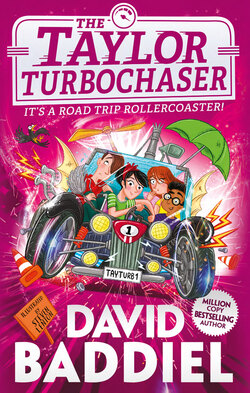Читать книгу The Taylor TurboChaser - David Baddiel - Страница 7
Оглавление
Amy Taylor loved cars. Here are her favourite ones:
1. The Aston Martin DB5. This is the one James Bond drives. Amy just loved the look of this one. Although as with all old cars (classic cars, as people in the know – like Amy – call them) if she had one she would get someone to remake it with an electric engine, so that it wasn’t bad for the planet. Maybe with the help of her friend Rahul, who was an inventor. Of sorts.
2. The Mercedes 300 SL Gullwing. This was another classic car. But it had doors that instead of opening normally came up like wings, making the whole car look like it could fly. It couldn’t.
3. The Jaguar E-Type, which was also an old car, but she liked the new one, called the Zero, which was actually electric. It was just as beautiful as the old car, and Amy thought it was very clever that the car had always been called the E-Type, even before there was an electric version.
4. The Ford Transit Van. Well, a Ford Transit van. Her mum’s white battered seven-year-old one.
Amy’s love for cars might seem unusual. Not because she was a girl – lots of girls like cars and lots of boys don’t – but because she had been in a really bad car accident when she was eight years old. Which also meant that since then – she was now eleven – she had needed to use a wheelchair.
Amy’s accident was also why the Ford Transit van was on her list of favourite cars. As a petrolhead – that’s slang for car fan – she knew it wasn’t up there with the Aston Martin and the Gullwing, but she also knew that her mum had spent a lot of time and money converting this old a-bit-like-Mater-from-Cars wagon into something that could transport Amy and her chair (and her very, very teenage-boy brother Jack – you’ll meet him in a bit). This made the van one of a million reasons why Amy loved her mum. She often felt an especially huge love for her mum as she easily wheeled her chair up the ramp that came out of the back of the van.
“Thanks, Mum!” she’d say, as she rolled up into the back of the Transit. “Look! I can do it one-handed …!”
Actually that isn’t true.
Or rather: it isn’t true any longer.
Amy used to be able to wheel her way easily up the ramp into the van, but not any more. The problem wasn’t with her, or the van: it was with her wheelchair. For some time now, the right wheel had not pointed in the same direction as the left wheel. Which meant that Amy sometimes felt like she was trying to get around in a supermarket trolley. And not just any trolley: one that’s been separated from all the others on the edge of the supermarket car park because, as soon as any shopper sees it, they know that its wheels will stick.
I’ve maybe gone a bit far with the trolley comparison. Although it was a comparison Amy herself would use a lot while complaining to her mum about her wheelchair. She was doing exactly that when this story begins, as they drove into Lodlil, the cheaper-than-most superstore near where they lived.
